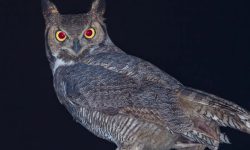The idea that ostriches bury their heads in the sand is one of the most widespread animal myths in the world. It appears in children’s books, comedy sketches, and even everyday expressions. Many people accept the image without questioning it. The truth, however, is that ostriches do not bury their heads at all. The myth emerged from misunderstandings about their behavior and how they interact with their environment.
Understanding what ostriches really do offers a clearer look at one of the most fascinating birds on Earth. Ostriches are powerful, fast, and highly intelligent animals. Their behaviors are shaped by life in open savannas where survival depends on constant awareness. The idea that they would bury their heads to hide is inconsistent with everything we know about their biology and instincts.
This article explores the origins of the myth and reveals the real reasons ostriches lower their heads, interact with the ground, and use posture in ways that confuse observers. By looking closely at their anatomy, behavior, habitat, and survival strategies, we can understand how one of the world’s strongest birds became associated with a surprisingly persistent misconception.
Understanding the Origins of the Myth

Misinterpretations from a distance
The myth likely began with ancient observers watching ostriches from far away. Ostriches often lower their heads to the ground while feeding, checking nests, or lying down to rest. From a distance, an ostrich with its head lowered blends into the landscape. Its long legs and body remain visible while the head disappears, giving the illusion that the bird’s head is buried underground.
The shimmering heat of the African savanna makes these illusions stronger. Distorted heat waves can hide the outline of the bird’s head, making it seem as though the bird has plunged it into the soil. This mirage-based effect would have confused early travelers, who then passed the story along without realizing how natural the behavior actually was.
These misunderstandings became solidified in storytelling traditions. As the myth traveled across cultures and centuries, its meaning expanded. Soon people believed ostriches buried their heads when frightened, overwhelmed, or trying to avoid danger. Each retelling stretched the misunderstanding further from reality.
Ancient writings helped spread the idea
Historical texts played a significant role in cementing the myth. Early naturalists described ostriches based on limited observation or secondhand accounts. Some interpreted ostrich behavior inaccurately and concluded that the birds attempted to hide by lowering their heads into bushes or sand. These interpretations were copied across centuries without correction.
Writers who observed ostriches during nesting may also have misinterpreted their movements. Adult ostriches often reach into nests to turn eggs, creating the appearance of burying their heads. Without understanding nesting behavior, early writers assumed the head was hidden underground.
Although modern science has disproven these claims, the myth remains widespread because it is simple, memorable, and humorous. Few animal myths have persisted as strongly.
Ostriches and human imagination
The myth appeals to human imagination because it suggests avoidance behavior. People often project human emotions onto animals, and burying one’s head symbolizes ignoring problems. This symbolism made the myth even more appealing. The idea spread through metaphors, expressions, and jokes, reinforcing the belief.
This psychological connection allowed the myth to outlast scientific clarification. Even today, many people refer to “burying one’s head in the sand” as a common idiom, unaware of its inaccurate animal reference.
What Ostriches Actually Do When They Lower Their Heads
Feeding behavior that mimics hiding
Ostriches spend a large portion of their day foraging. Their diet includes grasses, seeds, roots, flowers, and occasionally insects or small animals. To feed on low vegetation, ostriches must lower their heads to the ground. Their long necks allow them to reach food easily while keeping their large bodies upright.
From a distance, this foraging posture looks like the bird has buried its head. The head becomes nearly invisible while the body remains tall and noticeable. The longer the bird remains in this posture, the more convincing the illusion becomes. Observers unfamiliar with ostrich behavior may misinterpret this feeding posture as fear-driven hiding rather than simple foraging.
Feeding also requires slow and precise head movements. Ostriches examine plants, peck gently at seeds, and assess food quality. These careful motions are far removed from the frantic burying movement often imagined in the myth. The reality is calm and deliberate, not panicked or hidden.
Checking or rotating eggs in the nest
Ostriches are attentive parents and invest significant time in caring for their eggs. Their nests are shallow depressions dug into the ground. When adults tend to the nest, they often crouch or kneel and then lower their heads completely into the nest area to rotate or reposition eggs.
Rotating eggs ensures equal heat distribution and increases the chance of healthy development. This behavior requires the bird’s head to disappear into the nest for several moments at a time. When seen from a distance, it looks like the ostrich has buried its head in the earth.
Multiple ostriches may participate in caring for the nest, including the dominant female and males. All must lower their heads deeply to inspect eggs. Casual observers unaware of nesting habits may assume the bird is attempting to hide rather than performing essential parental care.
Resting and lowering posture for camouflage
Ostriches sometimes rest by lying down with their necks stretched flat along the ground. When fully stretched, the head becomes nearly invisible among grasses or soil. This resting posture helps ostriches conserve energy, especially in intense heat. It also creates a natural defensive position.
In the wild, ostriches rely on camouflage to protect chicks and avoid detection. A resting adult with a lowered head blends into the terrain. From afar, this posture appears as though the bird has buried its head. The bird is not hiding intentionally but using posture to reduce its profile and remain less noticeable to predators.
These natural, adaptive behaviors provide insight into how the myth formed and why it persists.
Why Ostriches Would Never Bury Their Heads to Avoid Danger
Evolution shaped them for awareness, not hiding
Ostriches possess exceptional awareness of their surroundings. Their large eyes give them some of the best vision among terrestrial animals. They can detect predators from great distances and react quickly. Burying their heads in the sand would remove their greatest survival advantage and leave them exposed to threats.
Predators in the African savanna include lions, hyenas, cheetahs, and wild dogs. An ostrich that buried its head would not survive long in such an environment. Natural selection favors alertness, speed, and defensive behaviors. Ostriches have evolved traits that help them detect and escape danger, not ignore it.
Every aspect of their behavior reflects survival strategies built around awareness. Their neck height allows them to scan the horizon for movement. Their sharp senses help them respond within seconds. Burying their head would contradict millions of years of evolutionary refinement.
Ostriches rely on speed as their primary defense
Ostriches are the fastest-running birds in the world. They can reach speeds of more than seventy kilometers per hour. Their powerful legs provide a rapid escape from danger. When confronted by predators, their instinct is to run, not hide.
Running allows them to create distance quickly. Their long strides and muscular build give them remarkable endurance. Ostriches can maintain high speeds and turn sharply to evade hunters. These traits ensure that they can survive in open savannas where cover is limited.
Burying their heads would prevent them from seeing predators and preparing for rapid escape. Such behavior would be life-threatening. Their defensive strategy depends entirely on observation and speed, making the myth scientifically incompatible with their survival.
Ostriches also use their legs for defense
When escape is not possible, ostriches defend themselves with powerful kicks. Their legs contain immense strength, capable of delivering blows strong enough to injure large predators. Each leg ends in a sharp claw that can inflict serious damage.
This physical advantage gives ostriches confidence during encounters with predators. They do not hide their heads but stand tall, ready to strike or flee. Their size alone is intimidating. An adult ostrich can weigh more than a hundred kilograms, making burial of the head an improbable and disadvantageous behavior.
Their defensive posture relies on visibility, awareness, and strength. None of their natural reactions involve hiding their head.
Real Reasons Ostriches Interact with the Ground
Thermoregulation and temperature control
The African savanna experiences extreme temperatures. Ostriches have developed effective ways to regulate body heat. Lowering the head may help them reduce their profile and absorb less direct sunlight. When resting, they align their bodies with the ground to minimize heat exposure.
This posture makes them appear smaller and less conspicuous. The neck stretched along the ground helps dissipate heat and reduce the amount of surface area exposed to the sun. Their feathers also play a role in cooling, but posture remains an important element of temperature control.
While this behavior resembles hiding from a distance, it has nothing to do with burying the head. It is a simple but effective way to stay cool in harsh environments.
Investigating objects or potential threats
Ostriches are naturally curious animals. They investigate insects, small objects, and food sources on the ground. When something catches their attention, they lower their heads to examine it closely. These movements can be quick or extended depending on the object of interest.
Curiosity-driven head lowering is common near nesting sites, water sources, and shaded areas. Observers unfamiliar with these behaviors may misinterpret them as burying the head even though the movement is purposeful and surface-focused.
This curiosity helps ostriches learn, adapt, and respond to environmental changes. Lowering the head is simply part of their natural investigative behavior.
Social signaling within a flock
Ostriches live in groups called flocks. Their body posture and head position convey information to other members. Lowering the head may signal relaxation, submission, or calmness depending on the situation. Social communication through posture plays a significant role in maintaining flock stability.
For example, a lower head posture may indicate that the bird is not acting aggressively. This helps reduce tension and avoids unnecessary conflict. These subtle signals maintain social order and support peaceful coexistence within the group.
Social postures involving head lowering contribute to the appearance of burying the head but serve entirely different purposes.
Why the Myth Persists Today
Cultural repetition strengthens belief
The idea that ostriches bury their heads remains popular because it has been repeated for generations. Phrases, jokes, and illustrations continue to reinforce the myth. Children learn it early, and many adults never question it. Cultural repetition turns misinformation into apparent truth.
This familiarity keeps the myth alive even as scientific understanding improves. People repeat the idea casually without investigating its origin.
Symbolic meaning keeps the myth popular
The phrase “bury your head in the sand” carries symbolic weight. It describes ignoring problems or avoiding difficult situations. This metaphor adds emotional resonance to the myth. Because the symbolism is relatable, the relationship between ostriches and avoidance becomes ingrained in popular culture.
The power of symbolism ensures that the myth persists. People find meaning in the expression even if it misrepresents the animal.
Misleading images and cartoons reinforce the idea
Cartoons, children’s books, and illustrations frequently depict ostriches burying their heads for comedic effect. These images are easier to remember than scientific explanations. The humor makes the myth appealing, especially to young audiences.
Even nature documentaries occasionally refer to the myth in passing, unintentionally reinforcing it. Visual repetition keeps the misconception alive.
FAQs About Why Ostriches Bury Their Heads
Do ostriches actually bury their heads in sand?
No. Ostriches never bury their heads. The myth comes from misinterpreting natural behaviors such as feeding or tending nests.
Why would someone think an ostrich hides its head?
From a distance, an ostrich lowering its head disappears visually. Heat waves, distance, and posture create the appearance of burying the head.
Do ostriches hide when scared?
No. They run at high speeds or defend themselves with powerful kicks. Hiding the head would be dangerous.
What do ostriches do at their nests?
They lower their heads to rotate and inspect eggs. This position resembles burying the head but is simply parental care.
How do ostriches defend themselves?
They use speed, sharp kicks, and strong legs to escape or fight predators.
Can ostriches see far away?
Yes. They have excellent long-distance vision and can detect predators early.
Why do ostriches lie down with their heads flat?
This resting posture helps them conserve energy and stay cooler in hot conditions.
Are ostriches smart?
Yes. They have strong problem-solving abilities and social intelligence.
Where did the myth begin?
It likely began with ancient observers misinterpreting ostrich behavior from a distance.
Is the myth still common today?
Yes. It remains widespread due to cultural repetition and humor, even though it is scientifically incorrect.
Final Thoughts
The myth that ostriches bury their heads is one of the most enduring misconceptions in natural history. It began from simple observational errors and grew into a cultural symbol of avoidance. The truth reveals a completely different story. Ostriches lower their heads for feeding, nesting, resting, cooling, and communicating, but never to hide from danger.
Ostriches are powerful, alert, and highly adapted to their environment. Their behaviors reflect intelligence and strength rather than ignorance or fear. By understanding the real reasons behind their head-lowering actions, we gain a deeper appreciation for these remarkable birds and the ecosystems they inhabit.
As myths fade and knowledge expands, ostriches remind us how important accurate observation is in understanding the natural world. Their story encourages curiosity, correction, and the willingness to look beyond appearances to discover the truth.






